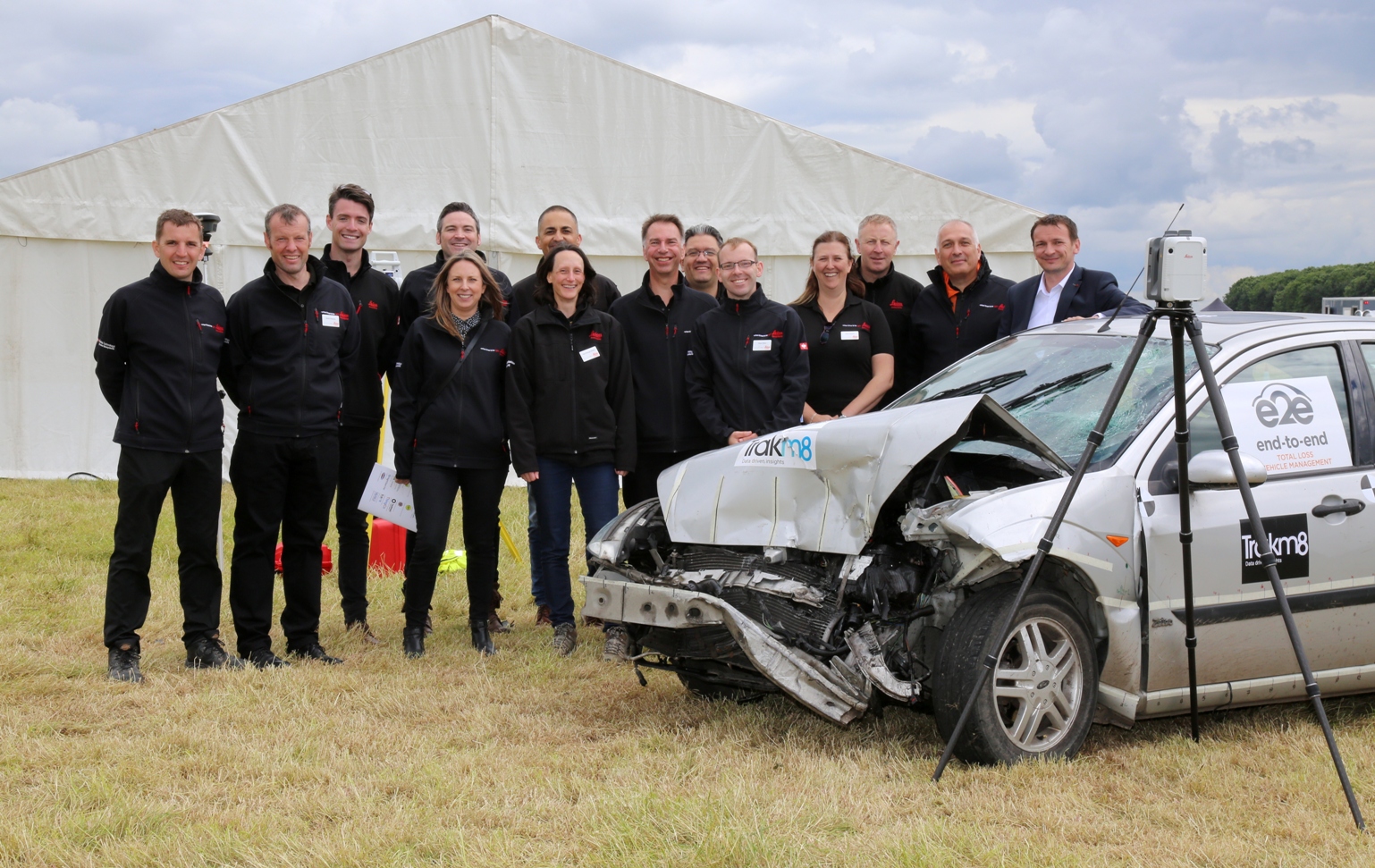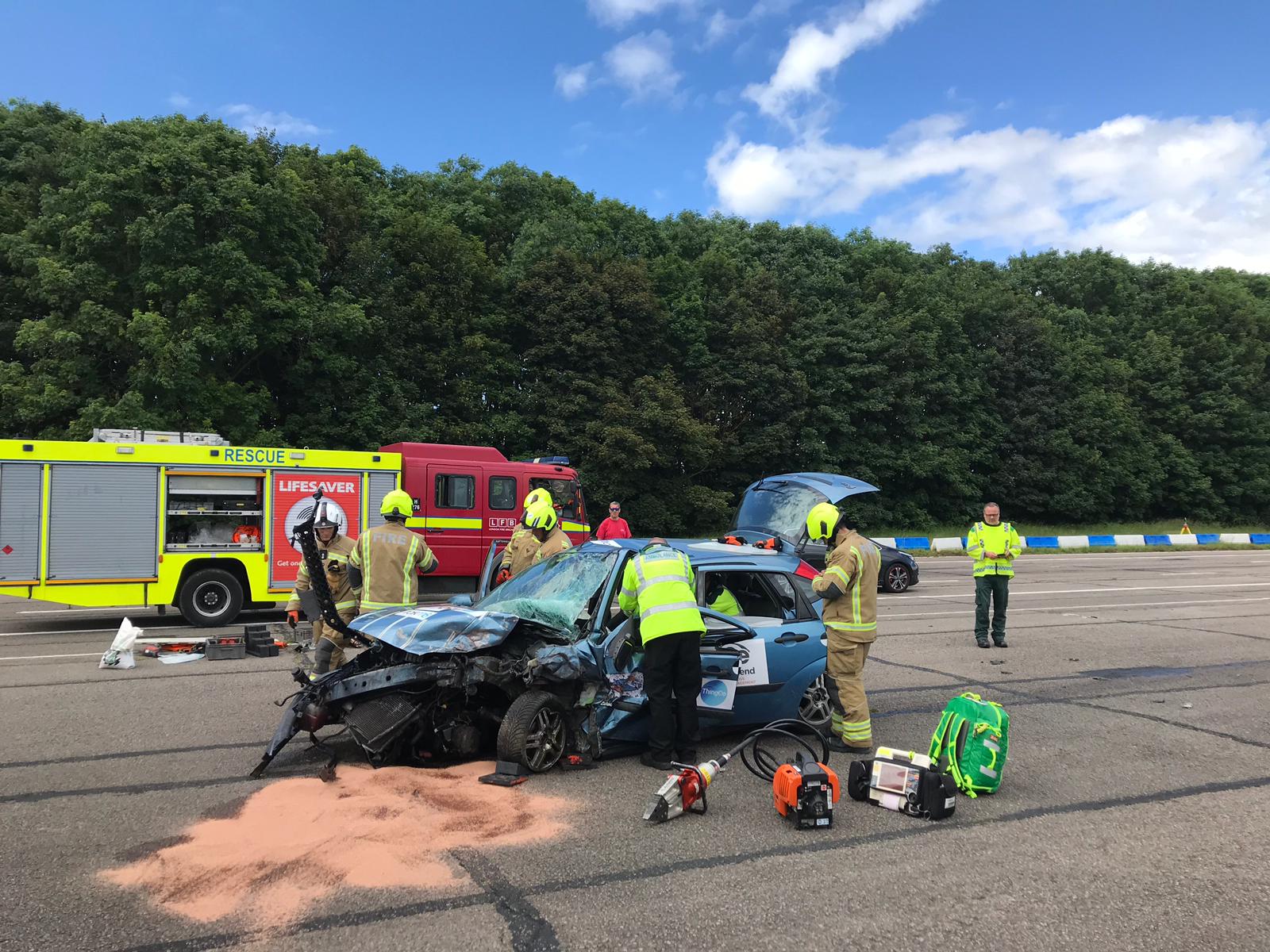ITAI Crash Test and Research Day
22 July 2019
This year, Leica Geosystems once again sponsored the Institute of Traffic Accident Investigators’ Crash Test and Research Day at Bruntingthorpe Airfield and Proving Ground. Over 420 delegates attended, including collision and crime-scene investigators, fire and ambulance services, private investigators, insurers and salvage companies.
ITAI council member Inspector Richard Auty, senior forensic collision investigator at the Metropolitan Police’s Road & Transport Policing Command, took the lead in arranging the day. “I’m very pleased about Leica’s support,” he said. “Without them, it would be much harder for us to stage the event and conduct such a wide range of important tests.”
Mike Skicko, Leica Geosystems’ UK public safety lead for forensics and collision investigation, explained why Leica sponsors the event. “We’ve been working very closely with police forces across the UK for the past two years, moving from being simply a solutions provider to being the go-to source of advice and support for collision investigators. Events like this cement our relationships with individual crash investigators. These relationships help us understand each force’s individual working practices so we can offer best practice on surveying and validation, and recommend the best scene-to-screen workflow for them.”
Click below for information on Leica Geosystems next crime-scene and collision investigation day in 2020.
Controlled collisions for validation testing
A number of crash tests were conducted throughout the day which were impacted by a remotely controlled vehicle, at speeds ranging from 40-90 mph and with varying degrees of overlap. Using Leica Geosystems RTC360 scanner, each vehicle was scanned both pre and post collision, to measure metal deformation (which can help to establish the collision speed) and momentum exchange.
According to Inspector Auty, “The tests were more extensive this year, and we spent several months in the planning because we’re using the data we gathered with Leica Geosystems RTC360 to validate some of our processes. Collision investigation has traditionally been part of the Road Policing or Traffic Departments, the operations side of police forces, but we’ll soon be coming under the Forensic Science Regulator, which has required us to conduct extensive testing to demonstrate the science we use is always valid across the wide range of cases we deal with. The ITAI event enabled us to gather the ‘ground truth’ we need to validate the current processes and techniques we use and we will retain it to validate any new processes, techniques or software in the future.
“Leica’s RTC360 scanner is small and lightweight – and it’s fast. For collision investigators, this is really important because we’re needing to re-open the roads as quickly as possible.”
– Inspector Richard Auty, Metropolitan Police Road & Transport Policing Command
Demo zones
We set up a demonstration zone featuring one of the cars which had undergone a controlled crash, and here we demonstrated a number of Leica Geosystems solutions including the RTC360, the BLK 360, the BLK3D, plus the GS18T GNSS tilt receiver and the Viva TS16 Total Station. As always, the RTC360 was a big draw thanks to its versatility, small size/weight, and its speed of data capture.
Working alongside Colin O’Neil, senior forensic collision investigator at Sussex Police, Juan Madronal, one of Leica Geosystems technical specialists, showcased our Aibot AX20 UAV (drone). Providing aerial imagery directly above the crash sight. The Aibot AX20 is ideal for rural or difficult to access scenes, or where crash debris has been scattered over a wide area.
In the software solutions tent, our own Dr Kate Strange-Walker and César Almeida demonstrated our scene-to-screen workflow using Cyclone REGISTER 360 and the Leica IMS 360 incident mapping suite. Klaus Rieke also invited crash-test investigators to come and try their hand at registering point clouds (an important part of the validation process which will be required for all crash investigators as they head towards compliance with ISO/IEC 17020 by 1 October 2020).
“The Met Police have been using Leica’s Total Stations and GPS for over 25 years now. They give us an excellent service – and their support has genuinely been exemplary. They respond quickly to any problems and have been able to provide replacement equipment when ours has been away or out of action.”
– Inspector Richard Auty, Metropolitan Police Road & Transport Policing Command
Critical speed analysis
Iain Took of West Midlands Police is seconded to the NPCC’s Forensic Collision Network, and has been helping to prepare for ISO/IEC17020. On the day, he invited delegates to use Leica’s Total Stations to see how accurately they could all measure the same road marks – and they came in within a very tight tolerance. In his own force, he uses the Leica ScanStation P20 and the new RTC360: “It’s very convenient to use, and produces good results,” he says of the RTC360. “We looked at competitor brands, but we stuck with Leica because they give us cracking customer support.”
Other activities on the day
In the afternoon, Leica delivered a manufacturer-agnostic lecture on “Laser-scanning best practice for collision investigators”. In particular, we looked at the importance of good geometry for registering scans together, covering different urban, rural, and semi-rural scenarios. Other seminars included an update on ISO validation from Frances Senior of the NPCC; David Compton of UKAS on accreditation in collision investigation for ISO/IEC 17020, ILAC G19 and the Forensic Science Regulator's Code of Practice; and others.
There were also several vehicle-handling events, including a critical-curve exercise, an incomplete wheel lockup exercise, and an examination of low tyre-pressure handling. Vehicle-driving opportunities included Surrey Fire and Rescue’s newest training vehicle and large goods vehicles (thanks to Cemex) – both with a view to the latest safety systems, particularly for pedestrians and cyclists.

























